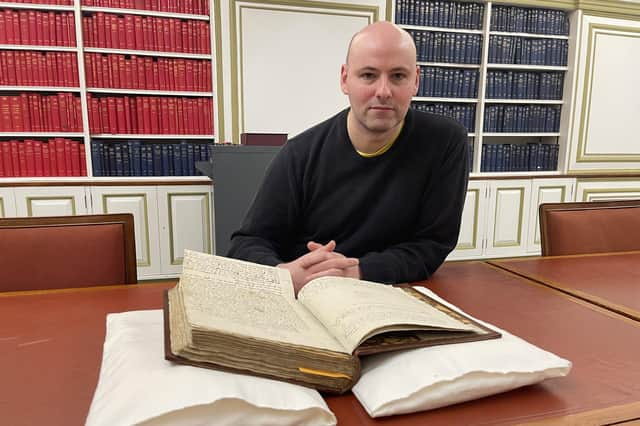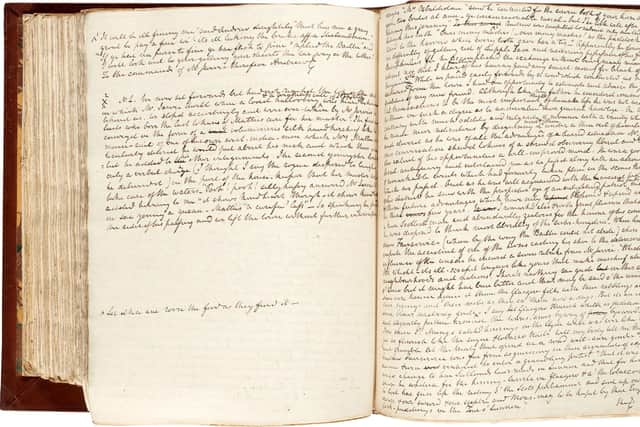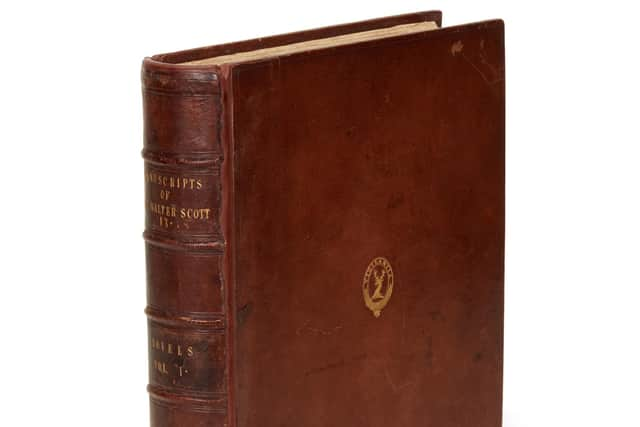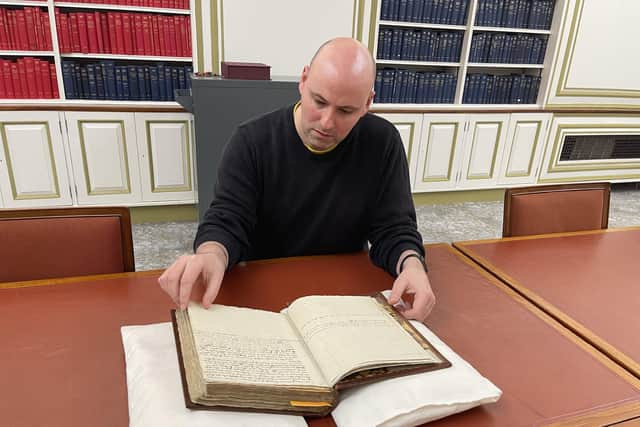Sir Walter Scott’s ‘priceless’ original Rob Roy manuscript to go on display in Edinburgh


Now Sir Walter Scott’s original manuscript for Rob Roy MacGregor, which the writer sold off after falling into financial trouble, is to go on public display in Scotland for the first time after being secured for the nation as part of a £15 million fundraising campaign.
More than 200 years after being written by Scott, the first version of the historical novel will join a showcase of some of the most important objects in the collection of the National Library of Scotland in Edinburgh in the spring.
Advertisement
Hide AdAdvertisement
Hide AdIts appearance in the library’s permanent “Treasures” exhibition has been confirmed a year on from a deal to secure the future of one of Britain’s most important literary collections.


The original Rob Roy manuscript was one of those sold off by the author to help reduce his debts in the aftermath of the 1826 financial crash.
It was later bought by John Gibson Lockhart, Scott’s son-in-law, and restored to the writer’s family, but was then sold on again in the 1890s, when it became part of the Honresfield Library, a collection assembled by two self-made Victorian industrialists, brothers William and Alfred Law.
The recent whereabouts of the Rob Roy manuscript had been something of a mystery in literary circles since the 1930s, when the contents of the library were no longer able to be accessed.
Advertisement
Hide AdAdvertisement
Hide AdHowever in May 2021 Sotheby’s announced the sale of more than 500 historic manuscripts, first editions, letters and bindings. Highlights included an “exceptional” group of first editions of Scott’s novels and letters to his publisher John Murray, as well as the Rob Roy manuscript, along with a volume of poems by Robert Burns in his own hand, written at the age of 24 before he found fame, and other handwritten manuscripts of poems and letters to friends, family, patrons and lovers.


Ralph McLean, manuscripts curator at the National Library of Scotland, said: “The jewel in the crown of the Scott collections in the Honresfield Library is the complete working manuscript of ‘Rob Roy”.
"This was the last major novel of Scott’s to remain in private hands and is certainly one of his most recognisable works. The complete nature of the manuscript is itself something of note as important manuscripts such as ‘Waverley’ and ‘Ivanhoe’ are only partially complete and have a number of sections missing
“Rob Roy was published in 1817 and like Scott’s earlier work, although published anonymously, was a commercial and critical success. The first print run for the work was 10,000 which was a huge number for the time.
Advertisement
Hide AdAdvertisement
Hide Ad"The manuscript follows Scott’s usual pattern of writing. He would write his story on the recto, or right hand side of the page, leaving the verso, or left hand side blank. He would then add text, or insertions onto the verso as he continued to revise his story.”


The UK-wide banking crisis in 1825 led to Scott facing financial ruin after the collapse of publishing houses he had close links with, leaving him in debt to the tune of £130,000, the equivalent of more than £11 million today. However he placed Abbotsford and his income in a trust and set out to write his way out of debt, producing six novels, two short stories and two plays between 1826 and 1832.Mr McLean added: “His manuscripts were seen as commodities which could be auctioned off to reduce his debts.
“It is believed that the Faculty of Advocates offered to purchase the first 12 books for £1000, a not insubstantial sum, but it was felt that more could be made by breaking the collection up.
“There is a note in the beginning of the manuscript describing how Rob Roy was back into the possession of his family in 1848 when it was bought by his son-in-law but was sold on again in the 1890s for the princely sum of £600 as the family had fallen on hard times and felt that that had no option but to sell it.
Advertisement
Hide AdAdvertisement
Hide Ad"William Law came from an area where the Bronte sisters were also from, but he had a real interest in Robert Burns and Walter Scott, primarily because they were such big literary figures.
"He actually formed a fairly close relationship with the Maxwell-Scott family, as they were at that point. In the case of the Rob Roy manuscript, he was able to buy that directly from the family.”
The 40 Scottish items in the collection were believed to have a combined value of £2.75 million but were described as “culturally priceless” when their fate was uncertain and it was feared that they could be dispersed overseas.
However the entire “lost library” was secured after leading heritage organisations and museums across the UK – including the National Library of Scotland, the National Trust for Scotland and Abbotsford, Scott’s former home in Melrose – formed a consortium to raise £15 million to purchase the collection from the surviving relatives of the two collectors.
Advertisement
Hide AdAdvertisement
Hide AdMr McLean said: “Scholars did have access to the Honresfield Library collection up until the 1930s, when it was in the possession of Alfred Law, the nephew of William Law.
"After he died, in a nutshell it disappeared after that, no-one had access to the collection and no-one knew where the manuscripts were housed. It was effectively missing until Sotheby’s posted on their website that the collection was coming up for sale. For all these things to turn up and for us to be able to lay hands on them is quite something.
"All the items in the collection, which to be fair have been kept in excellent condition by the family, are going through a digitisation process at the moment. Every page of them should be available to view online by anyone around the world at some point early in 2023.”
Comment Guidelines
National World encourages reader discussion on our stories. User feedback, insights and back-and-forth exchanges add a rich layer of context to reporting. Please review our Community Guidelines before commenting.
